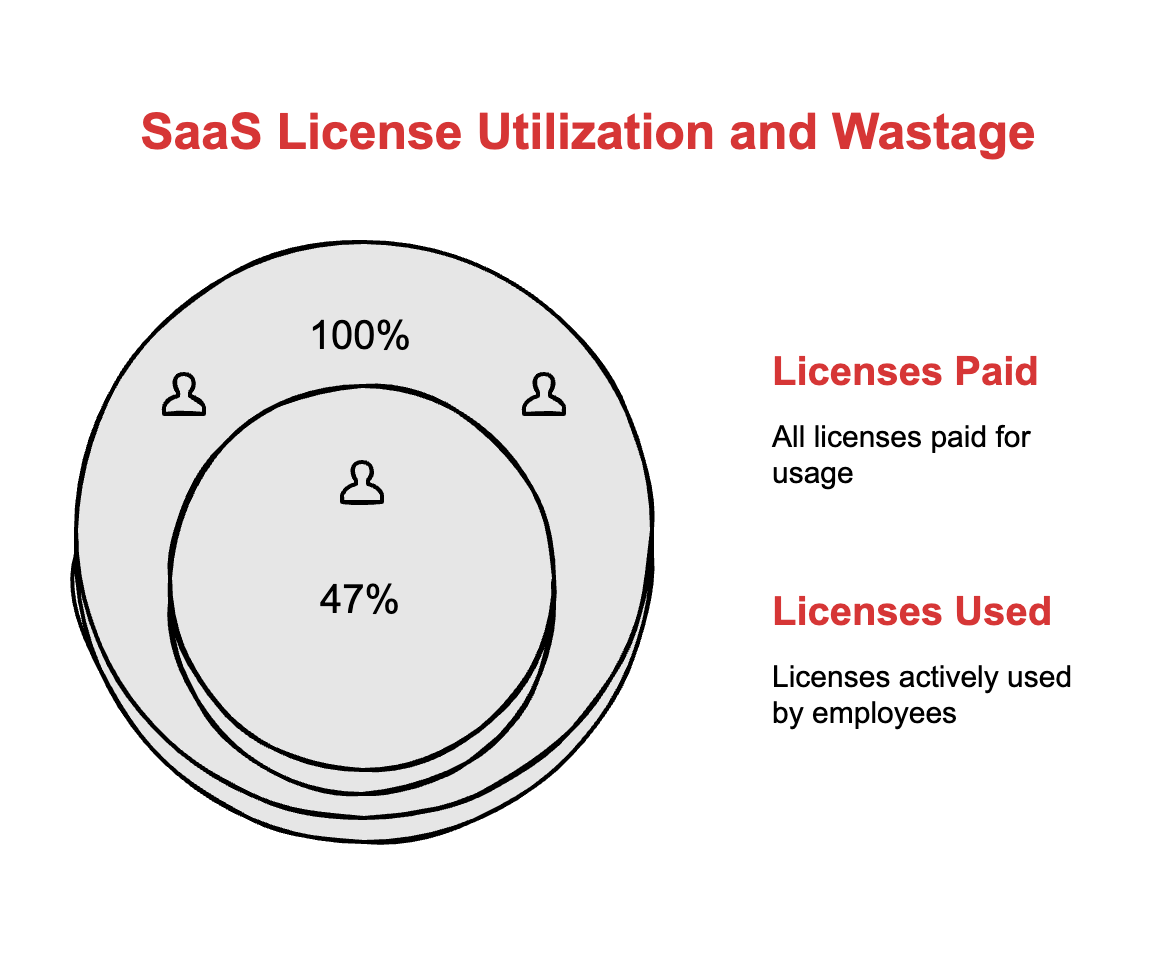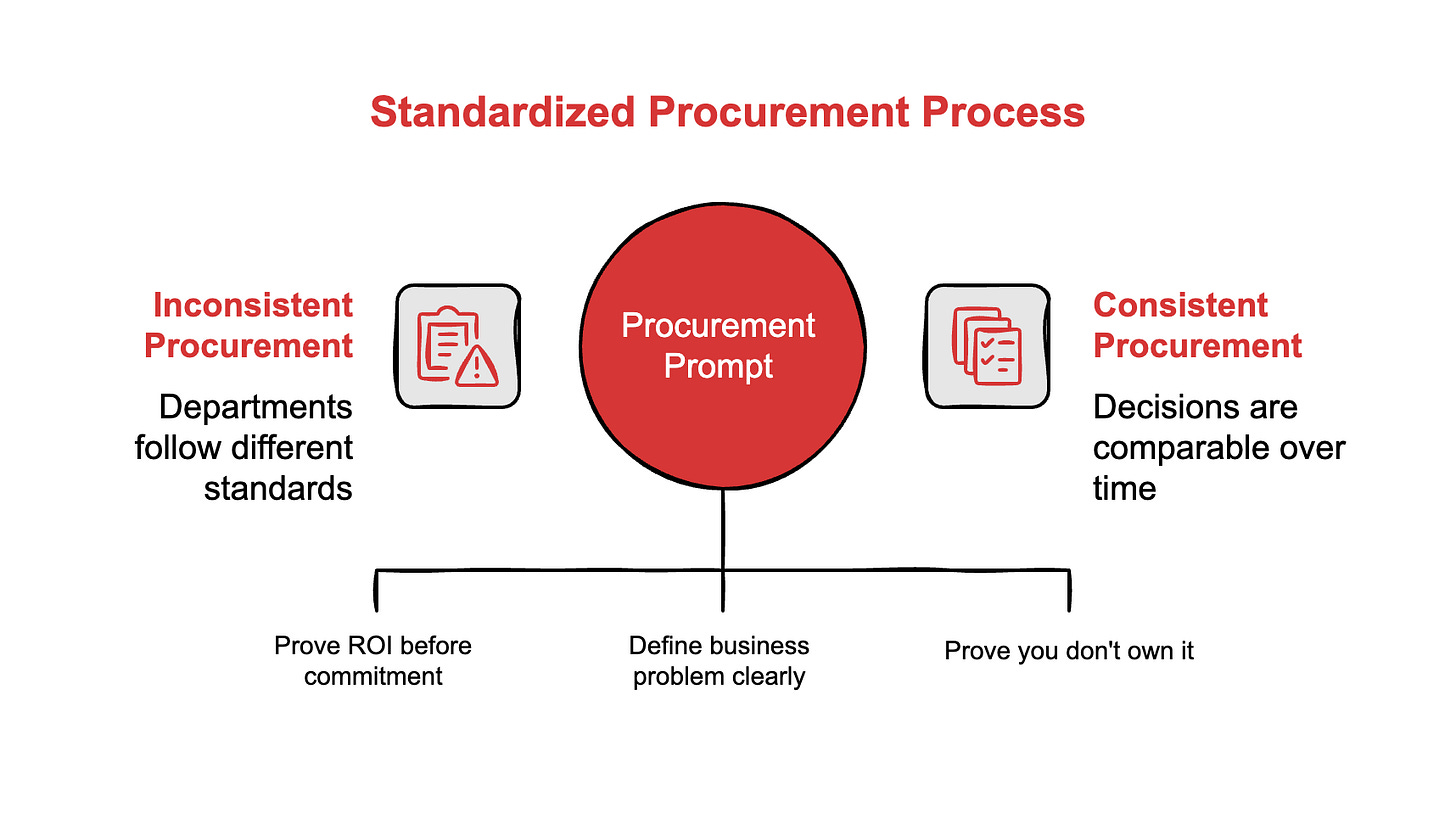This Procurement Prompt Stops You from Wasting Money on Software Nobody Uses
A step-by-step guide that prevents expensive mistakes before you buy
Hey Adopter,
Your marketing manager wants Semrush because a competitor mentioned it at a conference. Three months later, you’re paying $449 monthly for a login nobody remembers. Marketing still uses the old analytics tool.
This isn’t incompetence. Mid-size companies waste $18 million annually on unused software. Your organization uses only 47% of the SaaS licenses it pays for.
The pattern repeats across departments. Sales buys HubSpot. Marketing already owns Marketo. Finance purchases a third marketing automation tool because nobody checked what the company already owned. Result: $4,830 in wasted software spend per employee, up 21.9% from last year.
An AI procurement prompt changes this by forcing structured questions before any purchase. Not making decisions for you. Making the right questions unavoidable.
Three departments, three analytics tools, zero coordination
Most purchasing happens in isolation.
Marketing buys Google Analytics 360. Sales purchases Mixpanel. The product team subscribes to Adobe Analytics. Nobody realizes 30% of your company’s applications overlap in functionality.
This creates software sprawl you can’t see until you audit spending. Shadow IT accounts for 48% of total IT spending in some organizations. Departments make independent purchasing decisions using different standards, creating duplicate capabilities across platforms.
A structured AI prompt addresses this directly. Before evaluating vendors, it forces one question: “Do we already have a tool for this?” This single checkpoint prevents buying solutions that search for problems.
Every purchase needs the same questions
Your current process has no consistency.
Every department follows different standards. Every decision gets made based on whoever spoke to the vendor last. Every “urgent” purchase skips the uncomfortable questions about ROI, integration costs, and whether you already own something that does the job.
Companies using 110 to 152 SaaS applications need consistency, not bureaucracy. Not more approval layers. The same rigorous questions asked every time someone wants software.
A procurement prompt standardizes evaluation so decisions become comparable over time. You start seeing patterns. Which vendors deliver. Where assumptions diverged from reality.
The mechanism is eight sequential questions. Each one a gate that must be passed before moving forward.
When you’re forced to justify ROI before commitment, articulate the actual business problem before looking at features, and prove you don’t already own the capability, something shifts. Most “urgent” purchases aren’t.
The eight-question workflow
This prompt works because it asks questions in a conversation, not all at once. Complex purchasing decisions involve multiple stakeholders and hidden constraints. The guided format where AI asks each question before proceeding helps surface assumptions and test alternatives before they become expensive problems.




